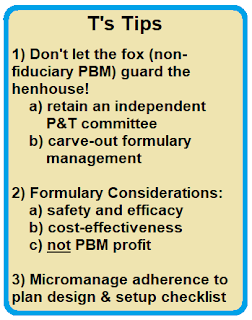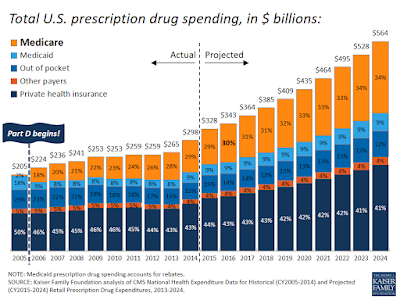Why pharmaceutical companies, under attack for drug prices, started an industry war
 |
| Click to Learn More |
“This has been a year of finger-pointing,” said Steven Pearson, president of the Institute for Clinical and Economic Review, a nonprofit organization that receives funding from insurance and drug companies. “They’re flooding the zone — with ‘they’ being pharma — with efforts to diffuse and deflect the focus on their role in drug pricing. Part of the policy challenge is they have a point.”
PBMs are for-profit companies that negotiate drug price discounts on behalf of insurers and employers. They include giant companies like Express Scripts Holding and CVS Health. They make money from fees paid by insurers and employers and by taking a cut of the rebates they negotiate. Drug companies have argued that the need to give larger and larger rebates to PBMs is what’s driving the list prices of drugs up.
Tyrone’s Commentary:
Recently, I had a conversation with a representative from a large biologic drug manufacturer about the gross-to-net bubble. It had introduced a new pricing strategy for a handful of specialty drugs which eliminated rebates to PBMs. To their disbelief, the pricing strategy wasn’t received as well as they had hoped. Consequently, the drugmaker reverted back to paying rebates in some cases.
One might surmise that all of the resistance came from PBMs and they would be wrong. To the drugmakers surprise, some of the push back came from third-party payers. That’s correct some third-party payers preferred the higher list price with rebates as opposed to the lower price without rebates!
Do these plan sponsors consider rebate dollars to be “free” money? It sort of reminds me of the person in the casino bragging about how they won $1000 on the slots but fails to mention they spent $1200 to win the $1000. Rebates most often lead to higher list and net prices to the plan sponsor.
Because rebates artificially inflate the price of prescription drugs, the person or team making the decision to accept or pass on rebates should be most interested in their company’s long-term growth and not self-preservation.
The PBMs say they typically pass along 90 percent of the savings they negotiate to customers, point to data showing no link between drug price growth and rebates — and point out drug companies are the one raising prices.









